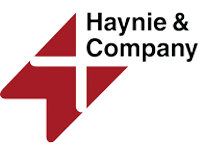02 Jun 2025 Smart Business Borrowing: Balancing Liquidity, Leverage, and Efficiency
Borrowing is one of the most consequential decisions a business owner can make. It can fuel growth or quietly erode profitability through interest drag, overextension, or mismatched timing.
When interest rates skew higher, these decisions become even more critical. Loan structures that worked at 6% can strain cash flow at 15%. Add to that the risks of unpredictable revenue, supply chain disruptions, and project overruns, and it becomes clear that borrowing wisely requires precision, not guesswork. The challenge is to secure enough capital without straining your resources or exposing your business to unnecessary risks.
This article explores how to approach borrowing as a deliberate financial strategy. We’ll break down how to size loans appropriately, as well as the calculations and considerations that should inform every loan decision.
Borrowing more than you need – or just enough?
Conventional wisdom says to borrow more than you think you’ll need. But when borrowing costs climb into double digits, that “buffer” can become an expensive liability.
Consider a $100,000 SBA 7(a) loan at 15.5%, amortized over five years. Total interest payments would exceed $40,000. Now, imagine you revisit your capital plan and determine that $90,000 is sufficient. Under the same terms, that modest adjustment could potentially save more than $4,000 in interest payments. While that difference may not look like much on paper, it’s money that could go to work inside your business instead of flowing out as interest. It might provide a modest cushion during a slow month or cover an unexpected expense. Small optimizations in loan sizing compound into meaningful flexibility over time.
And it’s not just about the interest. Over-borrowing doesn’t just cost more – it reduces operational flexibility, increases fixed costs, and compresses margins, especially during periods of volatility. Many business owners think of debt as protection, but unless it’s being put to productive use, it’s more accurately described as a penalty on your future options.
What’s the real cost of borrowing?
Understanding the true cost of debt requires more than glancing at the nominal interest rate. If your business qualifies to deduct interest expense, and many do, your after-tax borrowing cost could be lower than it appears.
Generally speaking, Section 163(j) limits the deductibility of business interest to 30% of adjusted taxable income for businesses with more than $25 million in average gross receipts. It’s a bit more nuanced than that, but for many small and mid-sized businesses, the 163(j) limitation isn’t a concern.
Consider a loan at 15.5% interest over five years. While the nominal rate is 15.5%, the ability to deduct interest payments can push the real after-tax cost closer to 11%, depending on your effective marginal tax rate. Even though this difference might not appear dramatic at first, it represents real money that can be reinvested into your operations or used to protect your cash flow.
The key point is that your nominal rate isn’t the same as your real rate, and understanding that gap is crucial for making informed borrowing decisions.
Of course, this example is simplified. If you’re evaluating the cost of a potential loan, it’s wise to meet with a CPA to model year-by-year deductions based on the loan specifics and your projected taxable income. They can help you better understand your effective interest rate and the true cost of the loan.
Planning for contingencies without overpaying for them
One of the most common borrowing missteps is using long-term debt to cover unknowns. It makes sense in theory: build in a cushion for the unexpected. But with many loans, where proceeds are disbursed in full shortly after closing, you’ll start paying interest on every dollar, even if it sits untouched in your account for months.
The better approach is to segment your financing. If you’re considering an SBA loan at double-digit interest rates, use it for essential, known expenditures and core costs. But consider a separate, more flexible tool for contingencies. A business line of credit is particularly well-suited here. It gives you access to funds without interest unless you draw, and can be activated quickly if cash flow falls short or expenses rise unexpectedly.
Lines of credit may be secured by receivables, inventory, or general business assets. If your business has strong financials, some lenders will offer unsecured lines with streamlined approvals, though limits may be modest. The key is timing: secure the line when cash is strong, not when you’re in crisis.
By combining structured, amortizing debt with revolving capital access, you gain flexibility without overcommitting—and avoid the trap of carrying expensive debt you might never use.
Timing and structure matter
How and when you borrow can be just as important as how much. Borrowing immediately after a fiscal year-end gives you the clearest financial picture and allows your CPA to model future cash flows with greater accuracy. It’s also a natural inflection point to reassess whether current-year needs justify debt or can be met through retained earnings.
Some SBA lenders allow interest-only periods—usually six to twelve months—during ramp-up or construction phases. These can smooth the transition into full repayment, especially if your business won’t generate immediate returns from the loan-funded investment. But this feature must be negotiated upfront and may be limited to specific use cases.
For more control, consider taking milestone-based drawdowns, but these types of loans are harder to secure. SBA 504 loans may permit these types of withdrawals for construction or phased expansion, but more often than not, you’d need to find private or alternative lenders to secure this type of loan.
Also worth noting: asset-backed loans often carry lower rates and longer terms. If you’re financing equipment or property, collateralizing the loan can significantly improve your repayment timeline and your cash position, even if it introduces some personal or business risk in the event of default.
Entity type and the hidden tax dynamics of debt
Debt also interacts with your legal structure and tax basis in important ways. In pass-through entities like S-Corps or LLCs, your ability to deduct losses or benefit from business deductions can hinge on how debt is incurred and by whom.
For example, if you personally lend money to your S-Corp, that increases your basis in the company. Basis is the measuring stick the IRS uses to determine how much loss you can deduct on your individual return. If the company takes on third-party debt, but you’re not personally liable, your basis may not increase, limiting the tax benefits of losses or deductions tied to that debt.
This becomes especially relevant in years of investment or early-stage growth, when losses may be large but deductible only if you have enough basis. It’s a subtle but critical detail that can alter both your tax position and how you structure your financing.
Before finalizing any loan, business owners should sit down with their CPA and ask: Will this increase my basis? How will this affect my ability to take deductions this year? The answers may steer you toward a different lender, loan type, or structure altogether.
How much is too much?
The temptation to stretch debt capacity is understandable, particularly in high-growth periods. But overextension is one of the most common causes of business distress, especially when fixed obligations begin to crowd out operational flexibility.
While rules of thumb like a debt service coverage ratio (DSCR) of 1.25x offer a baseline, they don’t replace real stress testing. Run scenarios. What happens if revenue dips by 15% for two quarters? If a key contract doesn’t close? If rates climb another 100 basis points?
These aren’t doomsday assumptions – they’re common market realities. Your debt plan should hold up under pressure, not just on paper in the base case.
Borrow deliberately
Borrowing isn’t inherently bad. It’s a lever – and like any lever, its impact depends on how you apply it. Smart borrowing can preserve equity, reduce tax liability, and fund high-return opportunities. In the absence of clear planning, it can erode profitability, increase stress, and limit agility when it’s needed most.
The takeaway is simple: don’t borrow reactively. Borrow strategically.
Before you sign that loan agreement, pressure test your model, confirm the tax treatment, and consider whether alternative structures might provide better flexibility or lower risk. And above all, treat borrowing as one piece of a broader capital strategy, not as a shortcut to short-term cash.
Thinking about securing a loan or restructuring existing debt? Contact our office, and we’ll help you model scenarios and maximize the return on your investment.
Contact The Haynie & Company CPA Firm For Tax Advisor Services
DO YOU HAVE QUESTIONS OR WANT TO TALK?
Fill out the form below and we’ll contact you to discuss your specific situation.

